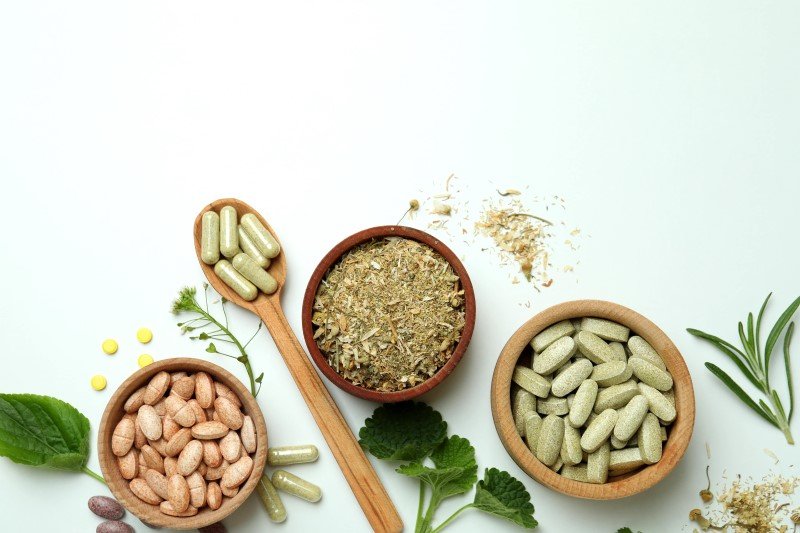Pain and nutrition

Typical Western diets program every cell in our body towards inflammation. With today’s diet, we do not manage to get enough substrate for the creation of anti-inflammatory prostaglandins, which is why the relationship between anti-inflammatory and pro-inflammatory mediators in the body is often disturbed. Food not only has an impact on prevention, but can also help shape the body’s response to pain.
| Food that does not cause pain |
| 1. Brown rice |
| 2. Cooked or dried fruit: cherries, cranberries, pears, plums |
| 3. Cooked green, yellow and orange vegetables: carrots, broccoli, Swiss chard, collard greens, lettuce, spinach, green beans, zucchini, sweet potato (sweet potato). |
| 4. Water: ordinary or mineral. Other beverages – even some herbal teas – can be pain triggers for some people |
| 5. Spices: vanilla |
Here are the common pain triggers, also known as the “dirty twelve”, in order of importance.
| Pain triggers | |
| 1. Dairy products* | 7. Nuts and peanuts |
| 2. Chocolate | 8. Tomato |
| 3. Eggs | 9. Onions |
| 4. Citrus fruits | 10. Maize |
| 5. Meat ** | 11. Apples |
| 6. Wheat (bread, pasta) | 12. Bananas |
| * include skimmed or whole cow’s milk, goat’s milk, cheese, yogurt, etc. ** include beef, pork, chicken, turkey, fish, etc. | |
Certain beverages and additives are also triggers, including alcoholic beverages (especially red wine), caffeinated beverages (coffee, tea, and cola), monosodium glutamate, aspartame (a common artificial sweetener).
Nutrition and arthritis
Arthritis causes pain and stiffness, and eventually joint deformities. However, arthritis doesn’t have to be a one-way street. Joint pain, swelling and stiffness can improve or even disappear with a change in diet. A pure vegetarian (vegan) diet benefits half of patients with arthritis. A list of foods for pain-free arthritis is shown in Table 1.
Dairy products and citrus fruits, corn and gluten are common triggers of arthritis pain.
A dietary detox for arthritis lasts for four weeks, when it is important to completely avoid all of the foods in Table 2 because even a small amount of triggers can cause symptoms. Meals should contain the five types of foods shown in Table 1. After four weeks, if symptoms have resolved, reintroduce the types of food one at a time, every two days. Many people have more than one trigger.
However, there are cases when inflammation starts unexpectedly. Joints can become hot and painful, not because they are injured, but because the reaction to the natural injury is inappropriately triggered. Inflammation also contributes to headaches, digestive problems, menstrual cramps, psoriasis, eczema and other conditions. Common medications such as aspirin or ibuprofen work by blocking inflammation, but their effectiveness is limited.
Two natural compounds derived from plants act like anti-inflammatory drugs. For some patients, they help dramatically; for others, their effect is more modest. The first compound, alpha-linolenic acid or ALA, is found in many common foods; vegetables, beans and fruit, and in concentrated form in linseed oil. It is also in the omega-3 family of fatty acids, a group that includes fish oil. Another compound, gamma-linolenic acid, or GLA, is much rarer. It is found in just a few unusual oils: borage oil, evening primrose oil, blackcurrant oil, and hemp oil. The same effect cannot be obtained from olive oil, corn oil, sunflower oil, lard, butter or other common fats or oils. They simply do not have any anti-inflammatory effect.
To understand how ALA and GLA work on pain and inflammation, it is important to explain what affects the heat inside the joints. Inflammation is controlled by various compounds in the body, called prostaglandins. One of them, prostaglandin E2, reacts with lightning speed. In the blink of an eye, it is produced by the cells in the joints, creates an immediate local inflammation, and then disappears. Its mission is to help the immune system attack toxins and initiate healing. Unfortunately, it can attack its own tissues just as quickly. Each molecule of prostaglandin E2 only lives for a moment, but if it’s constantly being released from cells, it’s like a constant sprinkling of sparks that set your joints ablaze. The inflammatory prostaglandin E2 is made from arachidonic acid found in meat (the average omnivore eats between 200 and 1,000 mg of arachidonic acid each day) and cooking oils, especially corn and sunflower oils.
Plants don’t have arachidonic acid at all because they don’t have the enzymes to make it.
Two other prostaglandins have the opposite effect; they work to stop inflammation. Called E1 and E3, they are like a splash of cold water on hot joints. They cool swelling, pain, redness and heat. What is important to know is that if you take a borage oil, evening primrose oil or blackcurrant oil supplement, the GLA in them is converted to prostaglandin E3 and engages its own anti-inflammatory effect. If one’s diet is high in animal fats or cooking oils, the effect is to create pro-inflammatory compounds. On the other hand, if one consumes more GLA or ALA, these beneficial oils contribute to the creation of natural anti-inflammatory compounds.
It can take a few weeks for these oils to work, and up to six months to see their full effect. Side effects are usually mild and transient. Pregnant women should avoid GLA as it may increase the chance of miscarriage.
A typical arthritis regimen includes the listed foods to be consumed daily, usually with the evening meal
- Borage oil or evening primrose PLUS
- Linseed oil, one spoon (or four capsules) PLUS
- Vitamin E, 400 IU (protects oils from oxidation)
GLA has a pronounced anti-inflammatory effect and affects various body functions. It is recommended for polyneuropathy, arthritis, autoimmune diseases, eczema, allergies, breast cancer, high blood pressure, menopause and PMS problems, and osteoporosis. To achieve the best anti-inflammatory effect, it is recommended to take omega-3 fatty acids at the same time.
Nightcap
Dosage: 6-8 g evening primrose oil per day (4 g evening primrose oil contains approximately 300-360 g GLA).
Borage
Dosage: 3.7-5.0 g of borage oil per day.
Flax
Dosage: Flaxseed – for a laxative effect, take 10 g (1 large spoon) of uncrushed or “broken” flaxseed, with at least 1 glass of liquid, 2-3 times a day.
For external use, 30-50 g of flaxseed flour is taken as a wet or hot compress.
Flaxseed oil – 5 ml (one spoonful) of oil per day.
All three oils should be stored in a cool and dark place, because due to the high proportion of unsaturated fatty acids, they are easily subject to oxidation. With the addition of vitamin E, this possibility is significantly reduced.
Antioxidants
Free radicals are a particularly serious problem in already inflamed joints. Among the most famous antioxidants is beta-carotene, which gives carrots their orange color, followed by vitamins C, E and the mineral selenium, which have been proven to strengthen immune function.
Exercise
The body creates natural pain-relieving peptides, enkephalins and endorphins (“endogenous morphine”). Enkephalins are produced in the adrenal glands and endorphins in the pituitary gland. They really act like morphine. Their main place of action is in the brain and the nerves themselves. Exercise is key to stimulating their secretion. The researchers tested the pain tolerance of athletes. Running six miles stimulates the release of endorphins, roughly equivalent to ten milligrams of morphine.
Tryptophan
The amino acid tryptophan stimulates the production of serotonin in the brain, which affects sensitivity to pain, mood and sleep. Tryptophan was popular in the United States until tryptophan preparations caused a rare blood disorder that took it off the market. However, carbohydrate-rich foods safely and reliably increase tryptophan levels in the blood, and for some people, carbohydrate-rich foods have a mild anti-depressant effect, and can also induce sleep and sometimes reduce pain.
Food and supplements also give us new ways to stop local tissue injuries, reduce pain impulses in the nerves, and even limit the perception of pain in the brain. Vitamin B6 (50-150 mg daily) and ginger (one to two grams daily) have been shown to be useful supplements for reducing pain.




